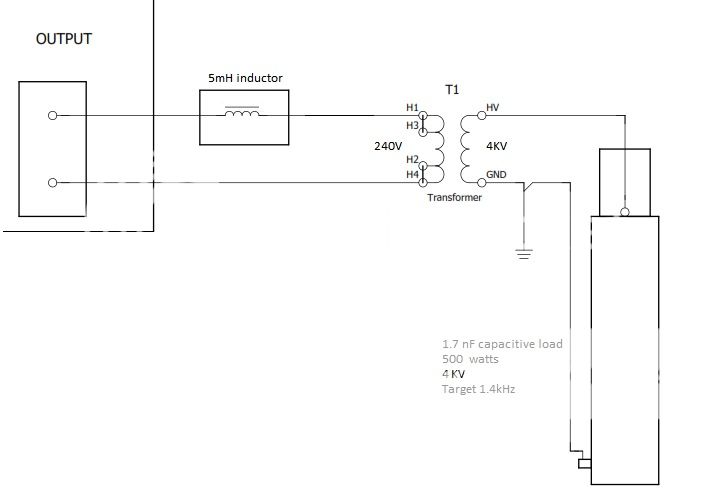I have a high voltage LC circuit. It is powered by a 4-5kV transformer and I have an inductor and capacitive load in the circuit. My question is to calculate the resonant frequency of the circuit does the inductance of the HV transformer secondary powering the circuit need to be included in the calculation?
Typical values for one system with a single load is a 5 mH inductor, capacitive load is normally about 1.7-1.9 nF which produces a resonant frequency of about 1.4-1.6 kHz. These numbers calculate pretty closely to what I'd expect not figuring in the transformer secondary inductance which is probably about 3-6 H. I can confirm this value later if necessary for the discussion.
My goal of this discussion is to enable me to better estimate the proper inductance to put into the circuit with varying capacitive loads. As it is now, I have typical inductors that I know 'normally' work from 1 to 7 loads. Each load should be about 1.7-1.9 nF but occasionally I have a difficult time tuning a system du to load variances and I also want to test different load setups. It would be much nicer to be able to get better estimated results on paper without having to try everything on the bench under power. Not sure it's relevant but each load runs at approximately 500W. With all 7 loads installed the system runs at about 3500 watts.
Thanks for your input.
Typical values for one system with a single load is a 5 mH inductor, capacitive load is normally about 1.7-1.9 nF which produces a resonant frequency of about 1.4-1.6 kHz. These numbers calculate pretty closely to what I'd expect not figuring in the transformer secondary inductance which is probably about 3-6 H. I can confirm this value later if necessary for the discussion.
My goal of this discussion is to enable me to better estimate the proper inductance to put into the circuit with varying capacitive loads. As it is now, I have typical inductors that I know 'normally' work from 1 to 7 loads. Each load should be about 1.7-1.9 nF but occasionally I have a difficult time tuning a system du to load variances and I also want to test different load setups. It would be much nicer to be able to get better estimated results on paper without having to try everything on the bench under power. Not sure it's relevant but each load runs at approximately 500W. With all 7 loads installed the system runs at about 3500 watts.
Thanks for your input.


